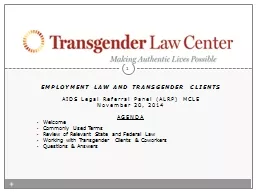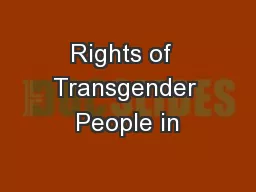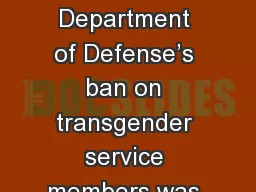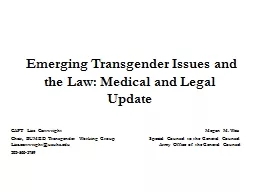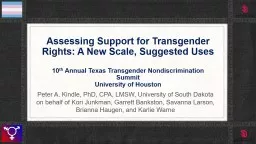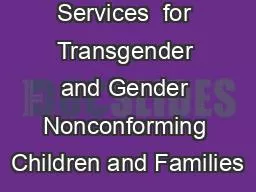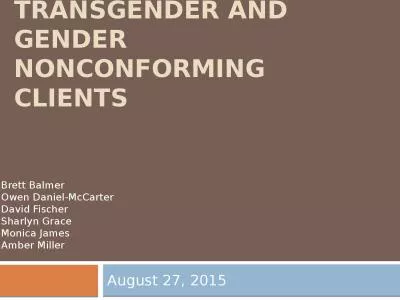PPT- Employment law and transgender clients
Author : faustina-dinatale | Published Date : 2017-08-04
AIDS Legal Referral Panel ALRP MCLE December 7 2016 AGENDA Welcome Commonly Used Terms Review of Relevant State and Federal Law Working with Transgender Clients
Presentation Embed Code
Download Presentation
Download Presentation The PPT/PDF document " Employment law and transgender clien..." is the property of its rightful owner. Permission is granted to download and print the materials on this website for personal, non-commercial use only, and to display it on your personal computer provided you do not modify the materials and that you retain all copyright notices contained in the materials. By downloading content from our website, you accept the terms of this agreement.
Employment law and transgender clients: Transcript
Download Rules Of Document
" Employment law and transgender clients"The content belongs to its owner. You may download and print it for personal use, without modification, and keep all copyright notices. By downloading, you agree to these terms.
Related Documents

